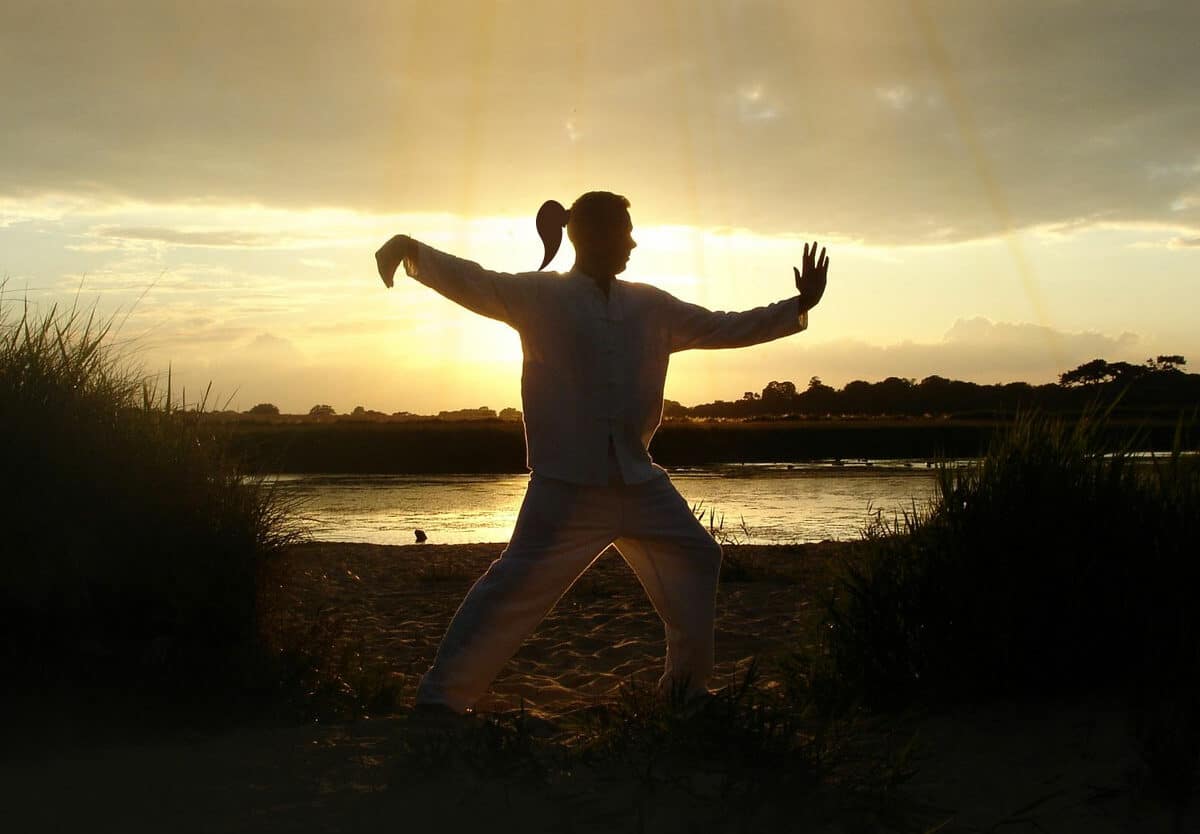World Tai Chi and Qigong Day is an annual event that takes place on the last Saturday of April, to promote the related martial art disciplines of Tai Chi and Qigong across the world. This year, it takes place on April 26. Starting in 1999, the movement saw people in up to 80 countries take part in Tai Chi and Qigong activities to help foster a greater understanding of the art forms, as well as the medical and spiritual benefits that they bring.
History of World Tai Chi and Qigong Day
The Chinese martial arts disciplines of Tai Chi Chuan (or Tai Chi) and Qigong are practiced by millions around the world. The practice emphasizes the use of body alignment, slow movements, and breathing techniques that help the practitioner improve their inner strength. Practicing these forms can help improve one’s blood circulation, posture, and both mental and physical balance. Both arts have their roots in ancient Chinese history, stemming mainly from Taoist, Confucian, and Buddhist meditation principles and self-defense practices. Their philosophies evolved from the writings of various Taoist figures, such as Lao Tzu, but truly formed as practices after Buddhism was introduced in China around 206 to 220 B.C.
The first form of Tai Chi as a practical tradition was documented in Northern China in the 16th century, but the most widely recognized form practiced today is the ‘Yang style,’ which was spread by martial arts expert Yang Luchan in the 19th century. In the 20th century, the Chinese government helped standardize Tai Chi’s various methods, helping martial arts gain wider recognition. The event that inspired World Tai Chi and Qigong Day took place in Kansas City, Missouri in 1998, where the local Tai Chi club held a public exhibition in front of the Nelson Atkins Museum of Art aiming to promote the martial arts practice. Residents were free to join in and take part.
After receiving coverage from major U.S. media outlets, the event generated interest gradually, beginning in other American cities until it eventually spread worldwide by 1999, with events held in various nations and cities. The goals of the event are to educate the world about the medical and spiritual benefits that both arts offer, and the benefits of implementing these ancient Chinese traditional ideas in health, education, business, and more. These are taught through events such as mass Tai Chi demonstrations, exhibitions, free classes, and education seminars. By doing so, the movement helps foster a vision of cooperation that transcends geopolitical borders for the sake of global health.
World Tai Chi and Qigong Day timeline
Qigong and Tai Chi principles are popular in the West, following the cultural exchanges that happened between the U.S. and China after former President Richard Nixon visited Beijing.
The first mass Tai Chi and Qigong events inspire the global celebrations to take place in Kansas City, Missouri, U.S.
World Tai Chi and Qigong Day becomes a global event practiced in various countries.
Global awareness increases following the official recognition of World Tai Chi and Qigong Day by governments around the world.
World Tai Chi and Qigong Day FAQs
What is the difference between Tai Chi and Qigong?
The differences between the two art forms are subtle, primarily in terms of movement. Tai Chi involves more specific movements that often involve the entire body, while Qigong can be interpreted using specific parts of the body and doesn’t always have fixed movements. The movements are determined depending on what suits the practitioner best. Tai Chi classes use the concepts of theories of Qigong, but Qigong sessions don’t necessarily involve Tai Chi movements.
Which is better, Tai Chi or Qigong?
There really isn’t an answer to which is best, as both can provide different benefits to the user. Both are low-intensity forms of exercise, and both help reduce stress and ease other ailments.
Does practicing Qigong carry any risks?
While there is no evidence documenting any serious risks or side effects associated with Qigong, exercise routines of any kind always carry the possibility that the practitioner may fall or injure themselves if they aren’t careful. Qigong and Tai Chi, however, use slower, controlled movements that reduce that possibility compared to more intense forms of exercise. Despite this, both are not proven to be substitutes for medical treatments, so medical issues should still be taken care of by medical professionals.
World Tai Chi and Qigong Day Activities
Take part
World Tai Chi and Qigong Day is a global event. If you happen to learn about events taking place in your locality, feel free to join in!
Practice at home
You don't have to wait until World Tai Chi and Qigong Day to practice Tai Chi or Qigong. You can do so in the comfort of your own home by implementing the teachings into your daily life as well.
Spread the word
Make those around you aware of the celebrations by posting about them on your social media feed using the #WorldTaiChiAndQigongDay hashtag. The more people know about it the better.
5 Fun Facts About Tai Chi And Qigong
Multiple styles
There are five different styles of Tai Chi, that differ in styles and movements, which are the ‘Chen,’ ‘Yang,’ ‘Wu Hao,’ ‘Wu,’ and ‘Sun’ styles.
Therapeutic effects
Both Tai Chi and Qigong are considered effective forms of therapy that many claim can help ease or prevent the effects of insomnia, diabetes, arthritis, and more.
The underlying goal
The primary goal of both Tai Chi and Qigong is the strengthening of one's ‘Qi,’ which is the internal force that makes up every living entity and is at the center of life.
Exposed to America
The American public's first exposure to the teachings of Qigong happened after an in-depth documentary by journalist Bill Moyers, in 1993, was aired on the PBS network.
Origin of the names
The name ‘Tai Chi Chuan’ is made up of the Chinese characters that mean ‘supreme’ (‘Tai’), ‘ultimate’ (‘Chi’), and ‘fist’ (‘Chuan’), while ‘Qigong’ is made up of characters that mean ‘life force’ (‘Qi’) and ‘practice’ (‘Gong’).
Why We Love World Tai Chi and Qigong Day
The practices have helped millions around the world
Scientific studies have been conducted throughout the years, which show that Tai Chi and Qigong help improve one's immunity to chronic ailments, reduce stress levels, and much more. It helps ensure many people live healthier lives.
It is a day to immerse yourself in different cultures
For many, World Tai Chi and Qigong Day is a chance for them to expose themselves to other cultures. Doing so can help increase awareness and education towards the greater world and foster a greater understanding of different cultural backgrounds.
It celebrates the transcendent power of culture
The fact that World Tai Chi and Qigong Day is celebrated in many places around the world shows the power of a culture's ideas transcending national and cultural borders. Both art forms comprise principles that apply and make sense to every single person, regardless of background, which further shows how connected we are as a species.
World Tai Chi and Qigong Day dates
| Year | Date | Day |
|---|---|---|
| 2024 | April 27 | Saturday |
| 2025 | April 26 | Saturday |
| 2025 | April 26 | Saturday |

